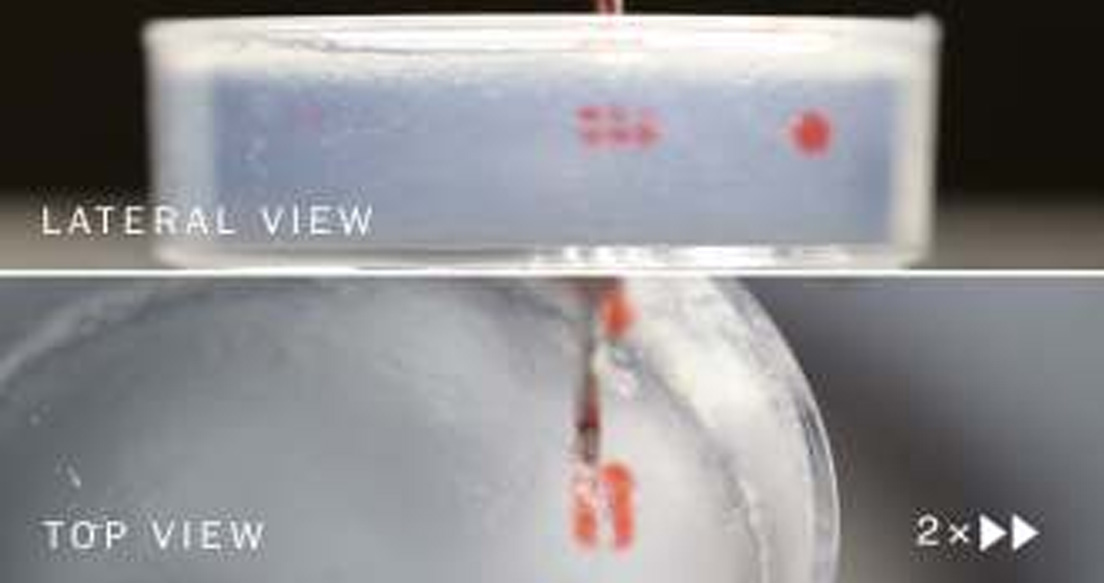At the University of Virginia researchers developed a new bioprinting technique based on voxels. Voxels are 3D cubes that form basic building blocks in computer graphics, similar to what pixels are for 2D, and have been popularized by games such as Minecraft. The new technique involves printing discrete spherical blobs of bioink (as the voxels) within a supportive matrix that then swell to merge together, forming a porous structure. Sticky bioinks can be difficult to handle and print predictably, but this new technique helps to address this issue.
Bioprinting holds enormous promise as a method to 3D print new tissues or even organs. However, there are many practical and technical hurdles to be overcome before we reach that point.
Typically, the existing process involves printing a sticky bioink consisting of a biomaterial matrix with encapsulated cells suspended within. This is frequently achieved by printing the bioink as a filament that emerges from the printer nozzle and then stacking the filaments layer-by-layer to form a structure. One of the issues is that these sticky ölaments are not easy to handle, and it can be difficult to create a desired structure using this method.
“It is very challenging to print bio-ink particles because they are very sticky,” said Liheng Cai, a researcher involved in the study, in a press release. “Because the bio-inks have the consistency of honey, it is hard to control when and how they detach from a printer nozzle. This becomes even more challenging when the bio-ink particles are as small as the diameter of a strand of human hair. A second challenge is to manipulate each particle into place to build a 3D structure.” To address this, these researchers used the 3D pixels present in computer games as inspiration for constructing a bioprinted structure. Their technique, called Digital Assembly of Spherical Viscoelastic Bio-ink Particles (DASP), involves depositing a droplet of bioink in a slurry of gelatin microparticles. The supportive matrix allows the researchers to place the ‘voxels’ in precise locations, to build a desired structure. “You need to make particles that maintain a round shape as they detach from the printer nozzle,” said Jinchang Zhu, another researcher involved in the study. “If the particles are too elastic, they will be deformed into a long thin strand instead of being a ball.”
So far, the researchers have used the technique to encapsulate pancreatic islets and showed that the highly porous nature of the resulting printed construct allows the islets to react quickly to glucose and rapidly release insulin. “We cannot yet precisely define the properties of each particle as Minecraft does for each voxel,”said
Cai. “But this technology is the first step toward 3D printing tissue with the complexity and organization needed for biomedical engineering, drug screening and disease modeling.”
















